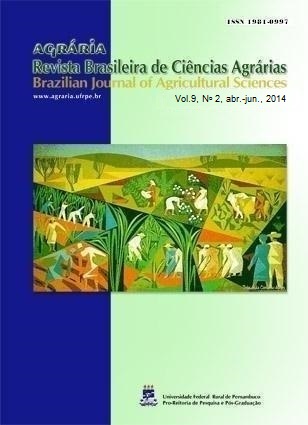Maintenance and reproduction of Anomalocardia brasiliana under laboratory conditions
DOI:
https://doi.org/10.5039/agraria.v9i2a3237Keywords:
Bivalve, spawning, nutritional physiology, VeneridaeAbstract
This study examined the filtration and ingestion rates from the Veneridae Anomalocardia brasiliana (Gmelin, 1791) and evaluated the efficiency of reproduction in laboratory. Specimens were collected on Mangue Seco beach, Pernambuco, Brazil. To evaluate the filtration and ingestion rates, experiments were carried out separately: the presence of light (2000 Lux) and absence of light, with three different temperatures (23.5, 27 and 30 ºC), and different salinities (20, 25, 30 and 35 g L-1). Spawning was tested by manipulating temperature with the addition of microalgae and gametes in induction treatment and without manipulating water variables by spontaneous spawning treatment. The most active filtration and ingestion for the species occurred in the absence of light, at temperature of 27 ºC, and salinity of 30 g L-1. It was found that there is no significant difference between the spontaneous and induction of spawning, however the spontaneous spawning showed a more significant amount of eggs and larvae. These results may contribute to the technology of maintenance breeding under laboratory conditions and seed production of this species for use in culture.
Downloads
Downloads
Published
How to Cite
Issue
Section
License

This work is licensed under a Creative Commons Attribution-NonCommercial 3.0 Unported License.


